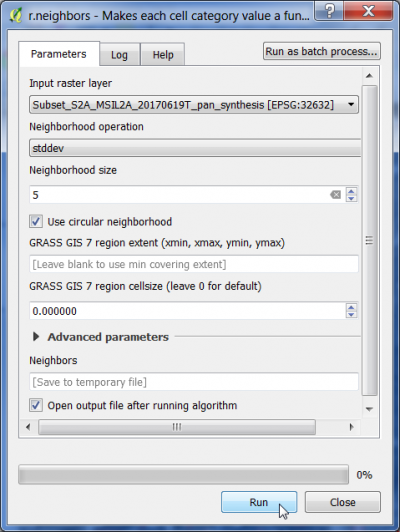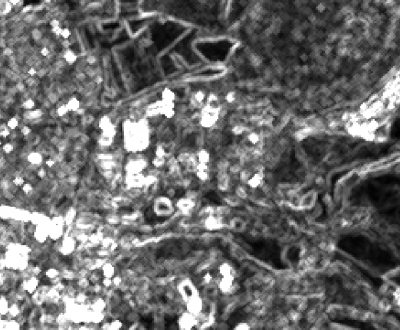First-order texture
From AWF-Wiki
(Difference between revisions)
| Line 6: | Line 6: | ||
* Select an odd integer number as '''Neighborhood size''' in pixels. | * Select an odd integer number as '''Neighborhood size''' in pixels. | ||
* Tick '''Use circular neighborhood'''. | * Tick '''Use circular neighborhood'''. | ||
| − | [[File:Qgis_texture_stdev.png|400px]] | + | [[File:Qgis_texture_stdev.png|400px]] |
| + | {| class="wikitable" | ||
| + | |style="border: 0pt" | [[file:Qgis_campus_synthesis.png|thumb|left|400px|'''Figure A:''' Input image: Sentinel-2 synthesis image based on 4 10m bands, (University Göttingen Campus North)]] | ||
| + | |style="border: 0pt" | [[file:Qgis_campus_stdev.png|thumb|center|400px|'''Figure B:''' Output image: Standard deviation texture of Sentinel-2 synthesis image (University Göttingen Campus North)]] | ||
| + | |} | ||
[[category:Spatial Filtering]] | [[category:Spatial Filtering]] | ||
Revision as of 14:00, 20 November 2017
Standard deviation or variance of gray levels in a region in the neighborhood of a pixel are examples of measures of first-order texture.
- In the search engine of the Processing Toolbox, type neighbors and select r.neighbors under Raster of GRASS GIS 7 commands.
- Under the Parameters tab, select a single band file as input layer.
- Select stddev from the drop-down list Neighborhood operation.
- Select an odd integer number as Neighborhood size in pixels.
- Tick Use circular neighborhood.


